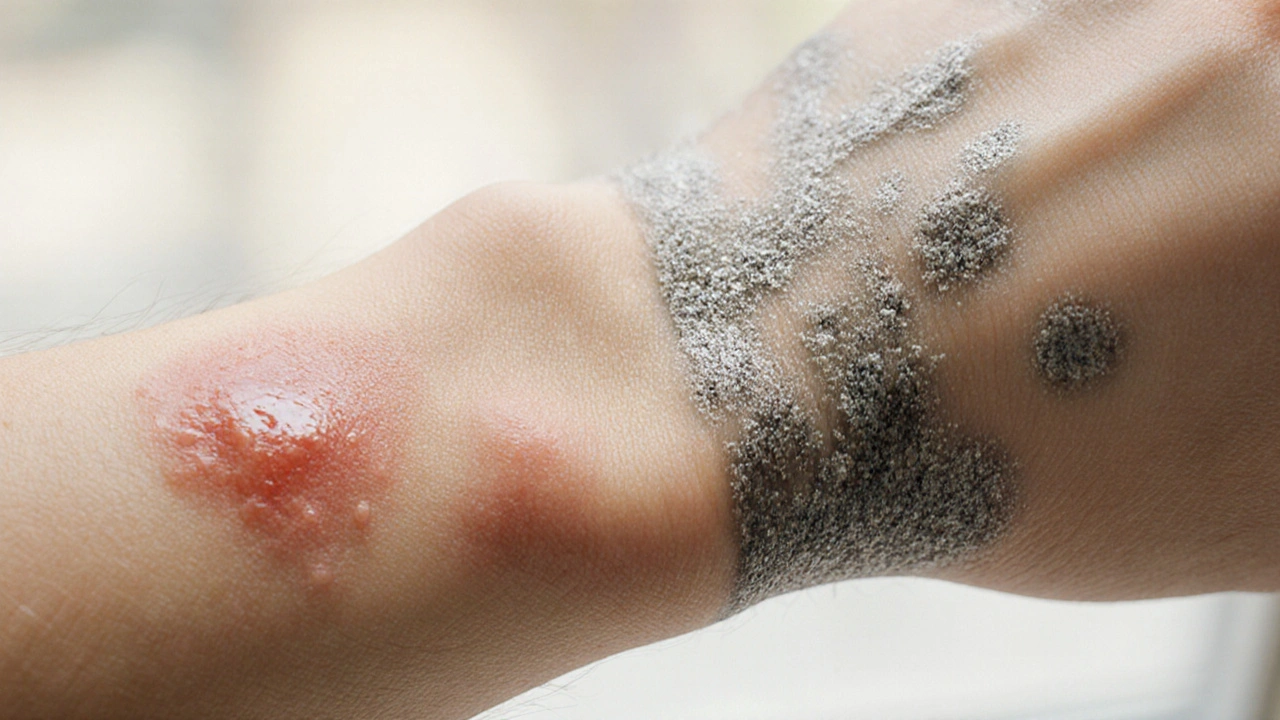How to Differentiate Skin Rashes: A Practical, Straight‑Forward Guide
If you’ve ever stared at an angry patch of skin and wondered what it is, you’re not alone. Most people can’t tell a harmless rash from one that needs a doctor. The good news is you don’t need a medical degree to spot the big differences. In the next few minutes, you’ll get a clear picture of the most common rash types, the clues they give, and the moments when professional help is a must.
Look at the Basics: Appearance, Location, and Timing
Start with three quick questions:
- What does it look like? Is it red and flat (a macule), raised (a papule), filled with fluid (a vesicle), or scaly?
- Where is it? Some rashes love the folds (like diaper rash), others pop up on exposed skin (sun exposure), and a few prefer the scalp or palms.
- When did it start? An instant reaction suggests an allergy; a slow build points to infection or chronic skin disease.
For example, a sudden, itchy red welts that appear minutes after touching a new detergent are classic for a contact allergy. In contrast, a gradually spreading, flaky patch on the elbows that’s been there weeks may signal eczema.
Common Rashes and Their Telltale Signs
1. Contact Dermatitis – Red, itchy, sometimes blistered skin right where something touched you. Look for a clear border and think about recent soaps, plants, or metals.
2. Heat Rash (Miliaria) – Tiny pink bumps that feel prickly, often on the neck, back, or under clothing after sweating. The rash is usually non‑itchy and improves after cooling the skin.
3. Psoriasis – Thick, silvery‑scaled plaques that favor the scalp, elbows, and knees. They’re not super itchy, but they’re persistent and may bleed when scratched.
4. Shingles (Herpes Zoster) – A painful, blistering band that follows a nerve line, usually on one side of the torso. The pain often starts before the rash appears.
5. Hives (Urticaria) – Raised, pale welts that come and go within hours. They’re extremely itchy and can be triggered by foods, meds, or stress.
Knowing these patterns helps you cut down the list quickly. If a rash matches one of the descriptions above and isn’t getting worse, you can often manage it at home.
When to Call a Doctor
Even the best self‑check can miss something serious. Reach out to a healthcare professional if you notice:
- Rapid spreading or swelling
- Pain that’s out of proportion to the rash
- Fever, chills, or feeling sick
- Blisters that ooze or crust over
- Rash on the face of a baby or on mucous membranes (inside mouth, eyes)
These signs could point to infection, allergic reaction, or an autoimmune condition that needs prescription treatment.
In most everyday cases, a quick look at the rash’s look, spot, and speed of appearance will give you a solid clue. Keep a small notebook or phone note of any new products, foods, or activities – that timeline is gold when you talk to a doctor.Remember, skin is the body’s biggest organ, so it often gives early warnings. By learning to read those signals, you save time, avoid unnecessary scares, and get the right care when you truly need it.
Take a moment now to check any rash you’ve been ignoring. Use the three‑step checklist, match it with the common patterns, and decide if a home remedy or a doctor’s visit is the right next step.
How to Tell If a Skin Rash Is Actually a Disorder
Learn how to tell a short‑lived skin rash from a chronic skin disorder with easy signs, a comparison table, and practical steps for home care or professional help.
